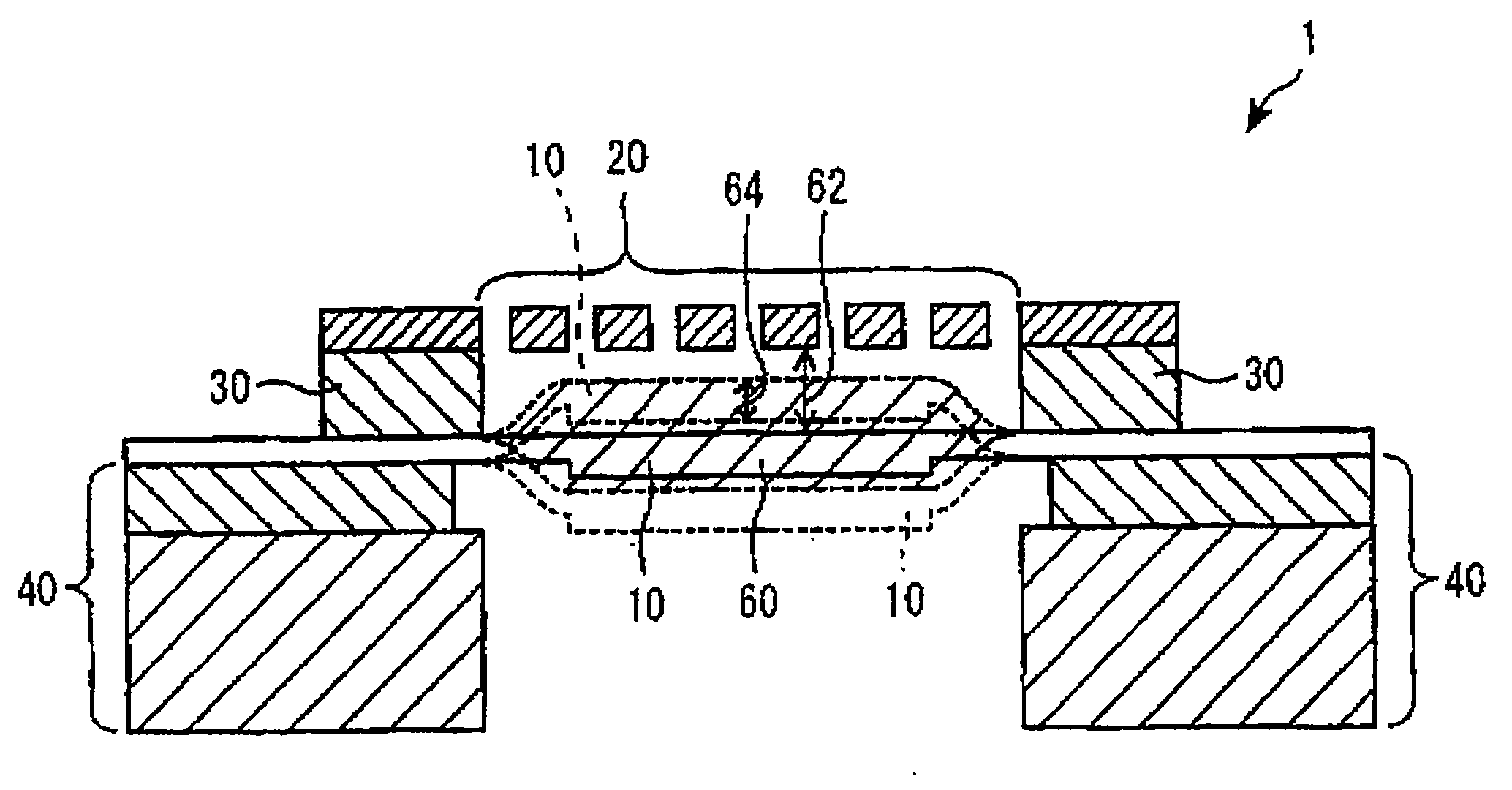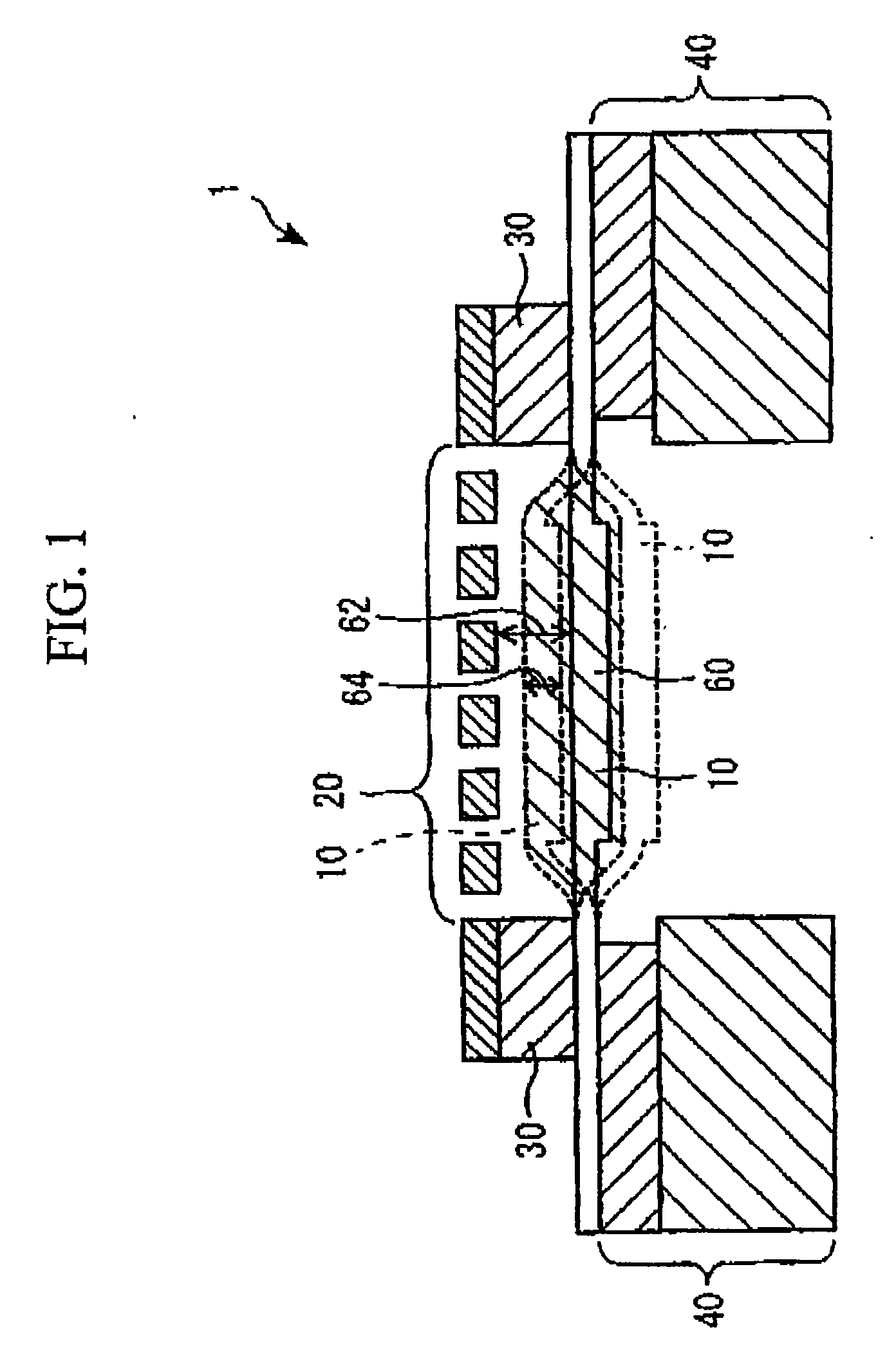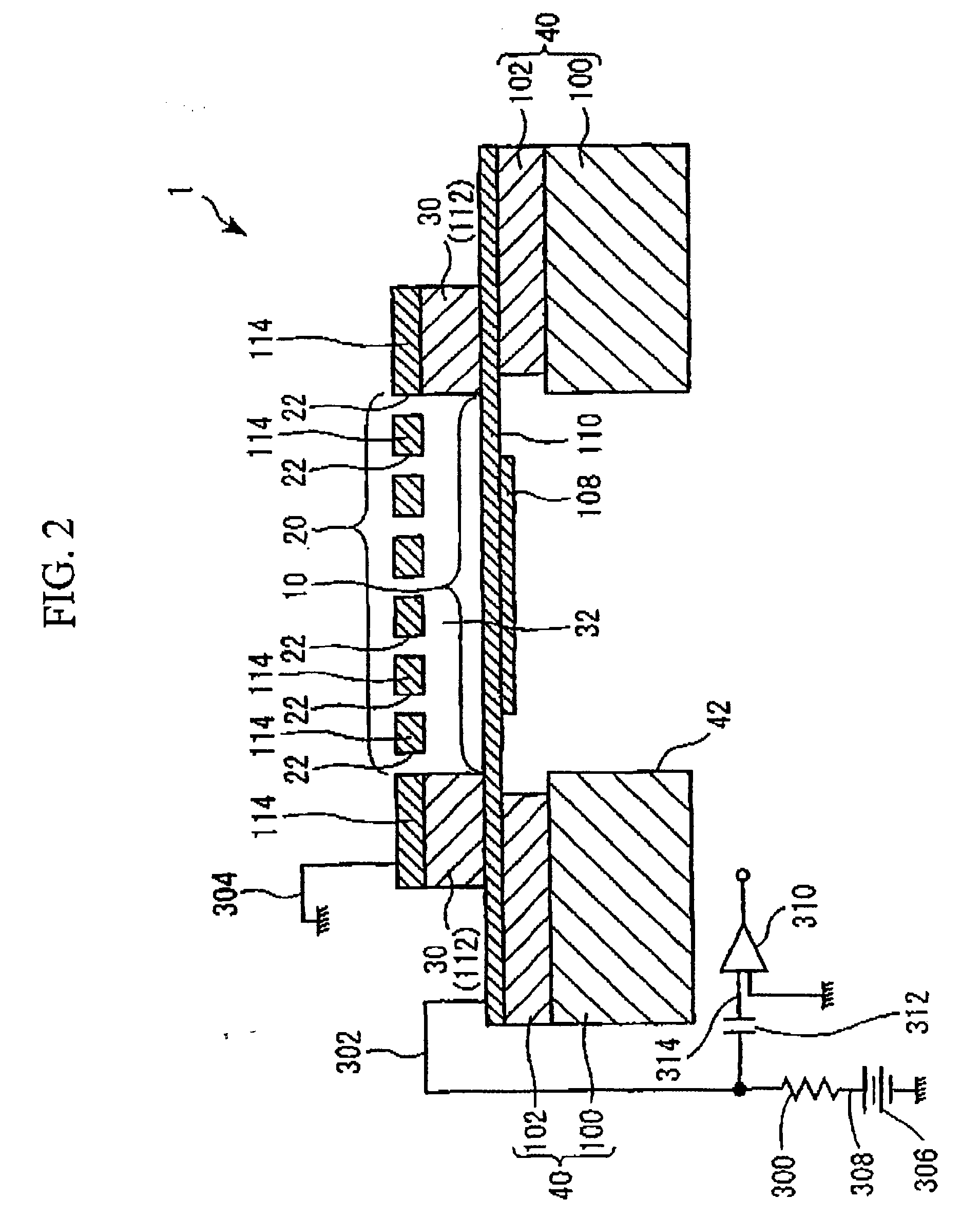Capacitor microphone
a capacitor microphone and microphone body technology, applied in the field of capacitor microphones, can solve the problems of reducing the sensitivity of the capacitor microphone, the air gap (formed between the diaphragm electrode and the fixed electrode) becoming easily non-uniform, and the manufacturer experiences difficulty in manufacturing high-sensitivity capacitor microphones. , to achieve the effect of uniform distribution of stress, and improving design freedom
- Summary
- Abstract
- Description
- Claims
- Application Information
AI Technical Summary
Benefits of technology
Problems solved by technology
Method used
Image
Examples
first embodiment
1. First Embodiment
[0104] The overall constitution of a capacitor microphone according to a first embodiment of the present invention will be described with reference to FIG. 2 and FIGS. 3A and 3B. FIG. 2 is a cross-sectional view diagrammatically showing the constitution of a capacitor microphone 1; FIG. 3A is an upper view of a back plate 20 included in the capacitor microphone 1; and FIG. 3B is a lower view of a diaphragm 10 included in the capacitor microphone 1.
[0105] The capacitor microphone 1 is called a “silicon microphone” that is produced using semiconductor manufacturing processes. As shown in FIG. 2, the capacitor microphone 1 includes a sound sensing portion and a detection portion realized by electronic circuits.
(a) Constitution of Sound Sensing Portion
[0106] As shown in FIG. 2, the sound sensing portion of the capacitor microphone 1 is constituted by the aforementioned diaphragm 10 and the back plate 20 as well as a spacer 30 and a base 40.
[0107] The diaphragm 10...
second embodiment
2. Second Embodiment
[0133] Next, a capacitor microphone 2 according to a second embodiment of the present invention will be described with reference to FIGS. 7A and 7B. FIG. 7A is a cross-sectional view diagrammatically showing the constitution of the capacitor microphone 2, and FIG. 7B is a lower view diagrammatically showing a diaphragm 210 incorporated in the capacitor microphone 2. The capacitor microphone 2 has a detection portion, the constitution of which is substantially identical to the constitution of the detection portion of the capacitor microphone 1.
[0134] The diaphragm 210 is constituted by a conductive film 110 and a plurality of projections 200. The projections 200 are formed using a semiconductor film (or a second film) composed of polysilicon and are positioned in a radial manner about the center of the non-fixed portion of the conductive film 110 (or a first film). The density of the projections 200 is gradually increased in a direction from the outer periphery o...
third embodiment
3. Third Embodiment
[0145] Next, a capacitor microphone 3 according to a third embodiment of the present invention will be described with reference to FIGS. 11A and 11B. Herein, a center portion 14 of a diaphragm 11 has a two-layered structure including a conductive film 23 and a conductive film 110. The conductive film 110 functions as a reinforcement film, which increases the rigidity of the center portion 14 of the diaphragm 11 and is formed to entirely cover the center portion 14. A plurality of near-end portions 15 are formed in the diaphragm 11 by use of the conductive film 110, wherein they act as bridge structures for interconnecting the center portion 14 to the spacer 30. The near-end portions 15 are each bent and folded in a zigzag manner so as to function as springs, For this reason, the rigidity of the near-end portions 15 is extremely reduced in comparison with the rigidity of the center portion 14, so that the deformation of the diaphragm 11 transmitting sound waves mus...
PUM
 Login to View More
Login to View More Abstract
Description
Claims
Application Information
 Login to View More
Login to View More - R&D
- Intellectual Property
- Life Sciences
- Materials
- Tech Scout
- Unparalleled Data Quality
- Higher Quality Content
- 60% Fewer Hallucinations
Browse by: Latest US Patents, China's latest patents, Technical Efficacy Thesaurus, Application Domain, Technology Topic, Popular Technical Reports.
© 2025 PatSnap. All rights reserved.Legal|Privacy policy|Modern Slavery Act Transparency Statement|Sitemap|About US| Contact US: help@patsnap.com



